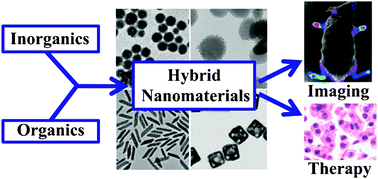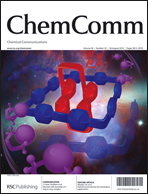Hybrid nanomaterials for biomedical applications
Abstract
Hybrid nanomaterials, composed of both inorganic and organic components, have recently been examined as promising platforms for imaging and therapeutic applications. This unique class of nanomaterials can not only retain beneficial features of both the inorganic and organic components, but also provides the ability to systematically tune the properties of the hybrid material through the combination of functional components. This feature article will summarize recent advances in the design and synthesis of hybrid nanomaterials and their applications in biological and biomedical areas. The hybrid nanomaterials to be discussed fall into two main categories,


 Please wait while we load your content...
Please wait while we load your content...